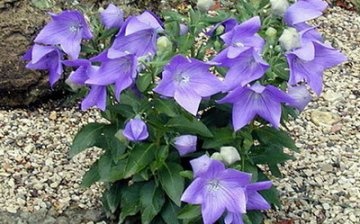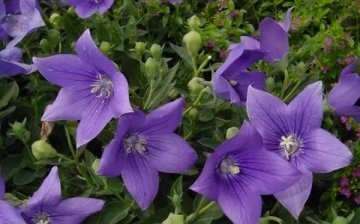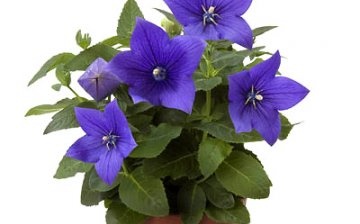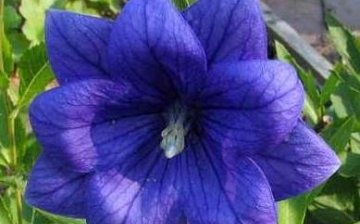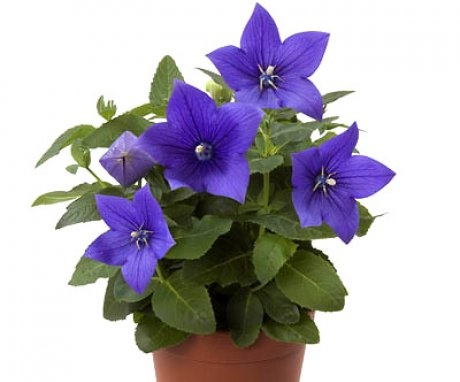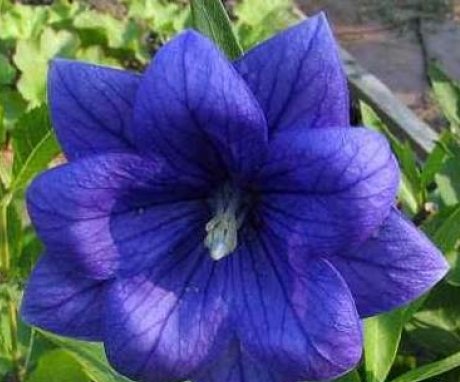How to grow platycodone from seeds
Lovers of bright unusual flowers should definitely take a closer look at platycodons, plants whose flowers look very much like large cup-shaped bells. It is because of the large flowers of the characteristic shape that the plant received such an unusual name that in translation from Greek it means "wide bell".
Content:
- What a miracle platycodon flower?
- Seed reproduction of Platicodon
- Requirements for growing Platicodon
What a miracle platycodon flower?
Platycodon is a perennial plant and can grow in one place for at least 5-6 years without transplanting. There are several types of platycodons. Some of them reach a height of 56-60 centimeters, they have large flowers up to 8 centimeters in diameter and strong, smooth stems. Some species grow up to 30 centimeters, and there are also low-growing platycodons, they are also called dwarf ones, they reach only 15-20 centimeters in height.
Flowers platycodons have beautiful five-petal bowls, which can have several shades depending on the variety: snow-white, white with purple veins, blue, pink. Among the variety of species, there are platycodons with simple and double flowers. In double flowers, the petals form a double circle, which makes the flower look like a double bell.
Platycodon blooms in early August and blooms until mid-autumn, if it has enough sun and the weather is not rainy. Those growers who want to preserve certain varieties need to know that platycodons are capable of pere-pollinating and the variety in this case is not preserved. Therefore, different varieties of plants are planted far from each other, in different parts of the garden plot.
If you grow flowers of the same variety, the varietal traits are well preserved.
Seed reproduction of Platicodon
Platycodons are propagated vegetatively and seeds... Of course, it is much easier to plant it vegetatively and the plant takes root faster. But if there is no way to plant a cut, then you can try to propagate the plant by seeds.
Platycodon seeds are sown in autumn or early spring in planting boxes. Usually, when sowing seeds in autumn, seedlings are not very friendly. But the spring sowing turns out to be much more organized, but it is accompanied by great trouble: the seeds are necessarily subjected to 3-month stratification.
For a seedling bed, choose an area with good lighting. In seedling boxes, seed is sown on the surface, without embedding in soil... Platycodon seeds are light-sensitive and germinate faster under the influence of natural light. For normal growth, create conditions for a mini-greenhouse: cover the box with crops with transparent film or glass.
Usually tender shoots appear on the 10-13th day, they are not watered, but well moistened by spraying. To prevent the plants from getting sick with a black leg, the greenhouse is opened and aired for a while. At the same time, the moisture in the seedling box decreases and the accumulated condensate evaporates.
In the greenhouse, platycodon seedlings should be left until several pieces of true leaves are formed on the plants. By this time, the sprouts are gaining strength, getting stronger and you can not be afraid to transplant them. Fortified plants dive, planting them in a separate planting container. And in the ground, landing is carried out after the threat of the last frost passes.
Requirements for growing platycodon
Platycodons take root well and develop on well-drained light soils. Before planting in the ground, humus is added to the pits. If clay predominates in the soil, you can lighten it by adding the right amount of river sand.
Be prepared for the fact that platycodons will bloom not in the current season, but in the second year, but you need to continue caring for them. Around the root part, they fluff the ground, carry out watering, and if necessary, they feed them. The plant itself will tell you about the lack of useful elements: its leaves will fade and slightly soften. Platycodons hibernate well.
For the winter period, the entire upper part of the plants is cut off, and the roots are well covered with a layer of fallen leaves or mulched with peat and humus.
In spring, the shoots of Platycodon do not appear immediately, but much later than in other plants. You might even think that the flower has died. Be patient and wait for young shoots to appear.
What Platycodon is afraid of is transplants... Therefore, carefully choose a place for him in the garden, counting on the fact that he will grow there for at least 5 years.
Platycodon blooms profusely and under the weight of the flowers, delicate stems can lie down and even break. In the second year, the grown plants must be tied to the support posts, preparing them for flowering. No support is required for dwarf species, they feel great without a garter.
Dwarf platycodon species adorn the foreground of mixborders. Tall varieties look great in large flower beds in combination with any flowering plants. It is better when platycodons coexist with flowers of a contrasting color, against their background wide bells look especially impressive.



